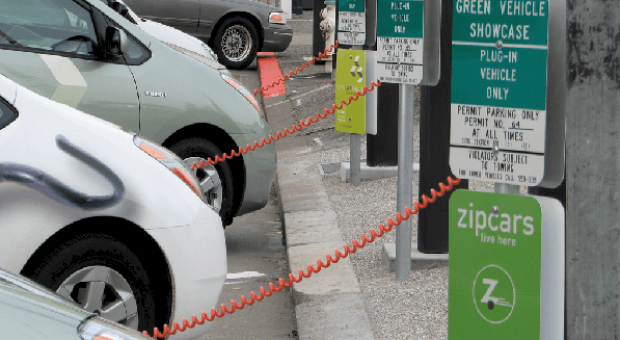
Hybrid Cars: All You Need to Know
Hybrid cars were introduced to Americans in the late ’90s and have since gained in popularity.
Though earlier considered a niche product aimed at a small group of consumers, it has gradually become mainstream with a staggering 495,000 hybrid cars being sold in 2013 alone. In a regular car only about 15 percent of the energy from the
fuel you put in your tank gets used to move your car down the road or run useful accessories, such as air conditioning. The rest of the energy is lost to the engine and driveline inefficiencies and idling.
In a hybrid, however, the electric motor captures this lost energy and uses it to aid the propulsion of the vehicle as and when required. You can definitely hope to derive immense joy from your gas savings in a hybrid. But are you sure you will not be left with a hole in your wallet when you buy one? Will the fuel economy help you offset the expenses involved in purchase and maintenance of the car?
In addition to this you have to take into consideration the different hybrid variants as well. Let’s have a look at the benefits a hybrid car will give you over a regular one and the expenses you will incur in the long run.
Types of Hybrids
- Mild hybrid: This type has a gas engine connected side-by-side to the electric motor at the front of the vehicle. The smaller gas engine powers the vehicle and the electric motor only helps to boost power when required. The benefit of this system is that the electric motor shuts off the engine while the vehicle is stopped or braking. Also it helps the engine to start more fuel-efficiently than when you use the ignition. Mild hybrids help improve fuel efficiency by 10%-15% in comparison to regular cars.
- Full hybrid: This is the most sophisticated hybrid system. Here the vehicle can be powered by the electric motor or combustion engine or by a combination of both. When starting and driving at low speeds or braking, the vehicle is powered by the electric motor alone. While the vehicle reaches highway speeds, the gasoline engine takes over, because this is the speed at which engines functions optimally and efficiently. Whenever acceleration is required the electric motor chips in with the required boost. Full hybrids are more fuel-efficient than their milder counterparts, but are also more expensive.
- Plug-in hybrid: Plug-in hybrids were first introduced in the US in 2010 with Nissan Leaf and Chevrolet Volt. Now there are about 16 models available with more launches expected. Prius has also offered its plug-in variants in some states in the US. Plug-in is different from hybrids in that here the electric motor is the primary source of power. Before the battery is depleted the gas engine steps in to provide the necessary boost to the electric motor when needed. Energy dissipating from the engine is used for recharging the battery until a charging station is available. An average car can run for up to 40 miles on a single battery charge before the gasoline engine is required to provide the backup.
Reasons to opt for a hybrid
- A hybrid car burns much less fuel than regular cars and hence emits considerably lesser amounts of toxic gases into the atmosphere. This is beneficial to the environment and you can do your bit to counter global warming.
- Hybrid cars have a free-flowing aerodynamic configuration which minimizes frontal air-drag while cruising. This increases the fuel efficiency and the mileage you get.
- The regenerative break system in hybrid cars uses the electric motor to stop the car. Since it is kinetic energy which powers the breaks, it increases fuel efficiency. Also regenerative breaks last much longer than the ones in regular cars and considerably reduce the costs involved in break maintenance.
- Hybrid car tires have harder components. This result in tires running at a higher air pressure with lesser road contact compared to conventional tires. This also contributes to higher fuel efficiency.
- You might be able to avail federal or local tax incentives to make owning and using your vehicle cost-effective for you. You may also have other advantages like preferred parking or employee rebates from your employer.
- In the case of plug-in hybrids there are more charging stations coming up and this should put rest to your worry of battery running out leaving you stranded mid-way on long travel.
- They are super trendy and it’s really cool to be seen driving one. It immediately makes you a concerned and compassionate world citizen doing your bit to save our earth.
Maintenance costs
Routine maintenance and repairs of hybrid cars is not very different from that of a regular car. The gasoline engine of hybrid cars requires the same maintenance as that of regular cars. In fact the expense you incur could well be lower. Some factors contributing to this are:
- The engine shuts down in hybrid cars when the vehicle is starting or is idle and when driving at low speeds, thereby helping to reduce wear and tear. It powers the vehicle at highway speeds. High speed enables optimal function and efficiency in engines. When accelerating the electric motor assists the engine with power-boosts.
- The regenerative braking system ensures there is less wear and tear of brake pads and brakes last quite long.
- In smaller hybrid cars oil and oil- filter changes are required at 4,000-5,000 miles for best results.
- Most of the hybrid systems have a warranty period of 8 years/100,000 miles to 10 years/150,000 miles. The batteries normally last way beyond their warranty periods with no complaints whatsoever.
- Most of the manufacturers have considerably decreased the price of replacement hybrid batteries. Today you need to pay a little over $2,000 for the batteries as compared to an eye-watering $8,000 in earlier days.
- Another problem faced by hybrid car buyers used to be lack of specialized technicians. But with hybrids going mainstream in popularity, easy and quick service is available.
- Hybrid cars require all the care and concern that regular cars demand. If used prudently they provide considerable financial savings, convenience, comfort and driving pleasure.ConclusionHybrid cars will greatly help in reducing the carbon footprint left behind by our generation. With billions of dollars being invested by manufacturers and auto majors, the technology will definitely get cleaner and better. So fifty years from now we would definitely be using cars. But cars which are far different from anything we have seen or known.
Author Bio:
Tracy Vides is currently associated with CarInQuotes.com, a realtime online platform for reviews of auto insurance companies who aims to help get the best and cheapest auto insurance quotes from the leading




















